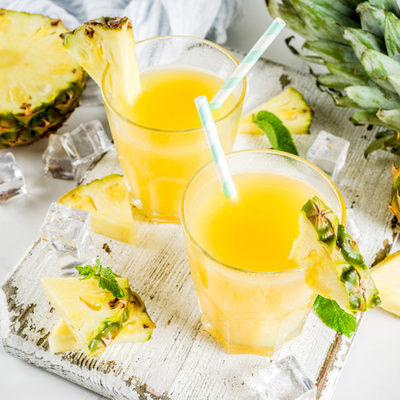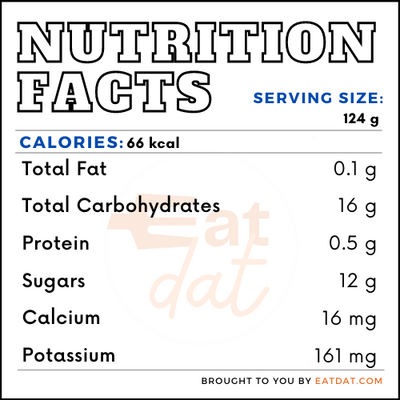
Pineapple Juice
What is Pineapple Juice?
Pineapple juice is a liquid drink that is made by pressing or extracting juice from the pulp of the pineapple fruit. The pineapple is a tropical fruit that is thorny on the outside and has a hard, yellow flesh inside. It is very sweet and ideal for making cocktails, desserts, and juice. This fruit juice must only be made with ripe pineapples.
- It can be made fresh at home or store-bought.
- The average per capita consumption in the US is 0.4 liters.
There are several brands in the market, including:
- Dole
- Lakewood
- Trader Joe’s
- Signature Kitchen
- R.W. Knudsen
- Langers
- Hansen’s
- First Street,
- Jumex
- Sunny Select
Origin
Pineapple originally grew in the wild in Brazil, Paraguay, and other parts of South America. It was an integral part of the diet of Native Americans. In 1493, Christopher Columbus came across the fruit and brought it to Europe, where wealthy Europeans grew it in greenhouses. These European explorers also brought the fruit to Asia, where the climate was conducive for growing it. In the early 1800s, pineapple was introduced into Hawaii, where pineapple juice gave a boost to pineapple production in the 1930s. Today, the main producers of pineapple are Thailand, Philippines, Mexico, Costa Rica, Chile, Brazil, China, Indonesia, Hawaii, India, Bangladesh, Nigeria, Kenya, Democratic Republic of Congo, Ivory Coast, Guinea, Dominican Republic, and South Africa.
Pineapple juice production
The commercial production begins with the selection of ripe pineapples. They are then washed and cleaned thoroughly, before being peeled. The next stage is the juicing. Then filtering and pasteurization is undertaken to get rid of the bacteria. Now the juice is either packaged or goes further processing to condense it into concentrates.
Nutrition
Nutritional value of pineapple juice (124g):

This fruit juice contains a lot of nutrients necessary for the human body. About 70% of the vitamin C requirement and 100% of the daily manganese requirement can be gained from a single portion of pineapple juice. It also contains good amounts of potassium, magnesium, copper, vitamin B6, and folate. Pineapple juice also has polyphenolic compounds, which offer protection against cancers, cardiovascular diseases, diabetes, osteoporosis, and neurodegenerative diseases. This drink tends to retain a lot of the pulp, and hence it is also a good source of fiber.
Pineapple juice recipes
It can be consumed as a beverage, but it can also be used to make different recipes. Here are a few recipes to give it that slight sweet and tarty flavor.
- Fresh Pineapple Juice
- Cake
- Baked Chicken
- Pineapple Braised Pork Sandwich
- Hawaiian Chicken Wrap
- Guarapo de Piña Recipe
- Jamaican Pork
- Brown Sugar and Pineapple Glazed Ham
FDA regulations
The FDA defines canned juices that is obtained from the flesh of ripe pineapples and intended for direct consumption. The juice must be devoid of any solid material such as shells, seeds, or other hard substances, or excessive pulp. This fruits juice must have at least 12.8 percent concentration.
References
Kerala Agricultural University, Pineapple Research Station, Vazhakulam
http://prsvkm.kau.in/book/history
Ivanova, N N et al. Voprosy pitaniia vol. 88,2 (2019): 73-82. doi:10.24411/0042-8833-2019-10020
https://pubmed.ncbi.nlm.nih.gov/31233691/
